Newsprint Cowl
You may think of stockinette as so basic it’s boring, but think again! Stockinette has many surprises up its sleeve, including the beauty of its “wrong” side. Sometimes ignored for its sleeker knit stitch counterpart, the purl side has the advantage of texture: nubbly and rustic, tactile and fascinating!
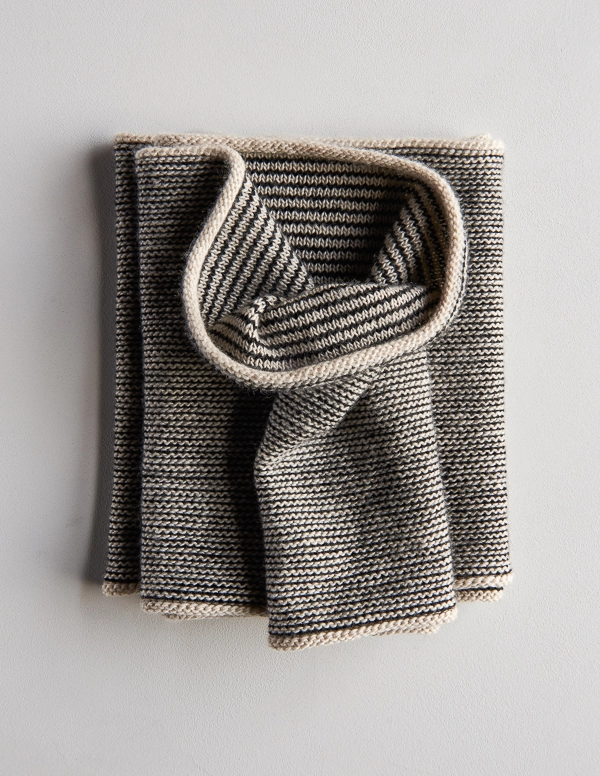
For our Newsprint Cowl, we pushed this texture even further by adding stripes, so those purl bumps turn into blips of color like printed words across a page. And when the knit side folds over, as it’s bound to do, the contrast is far from boring!
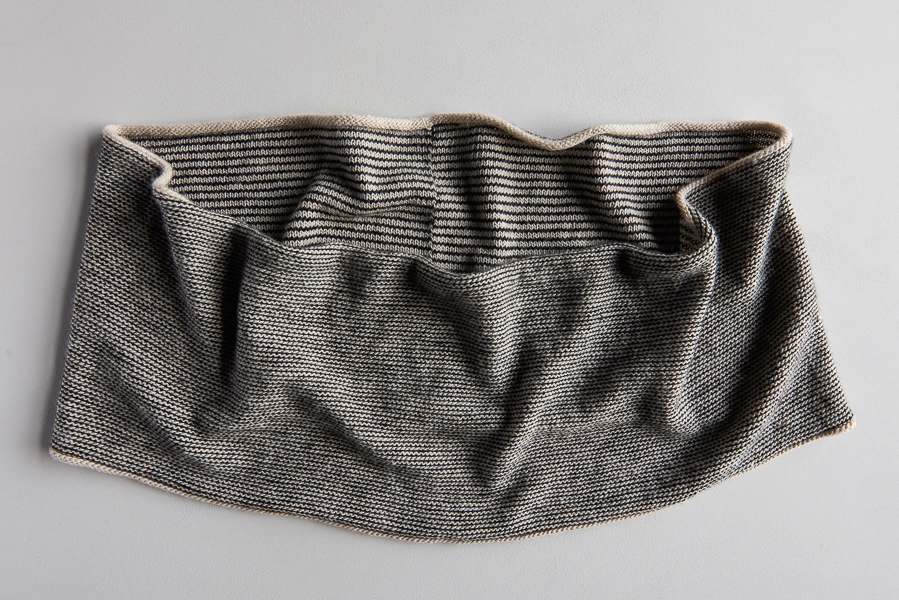
To achieve the subtle effect of printed words, we used our light and lovely Line Weight. It’s also as soft as can be and just the right weight for fall, winter, and spring! -Michele Wang
P.S. Michele Wang is an amazing knit designer and good friend to Purl Soho. Be sure to check out her new book of patterns, Capsule Winter 2017, and thank you, Michele, for contributing this original design here! -The Purl Soho team
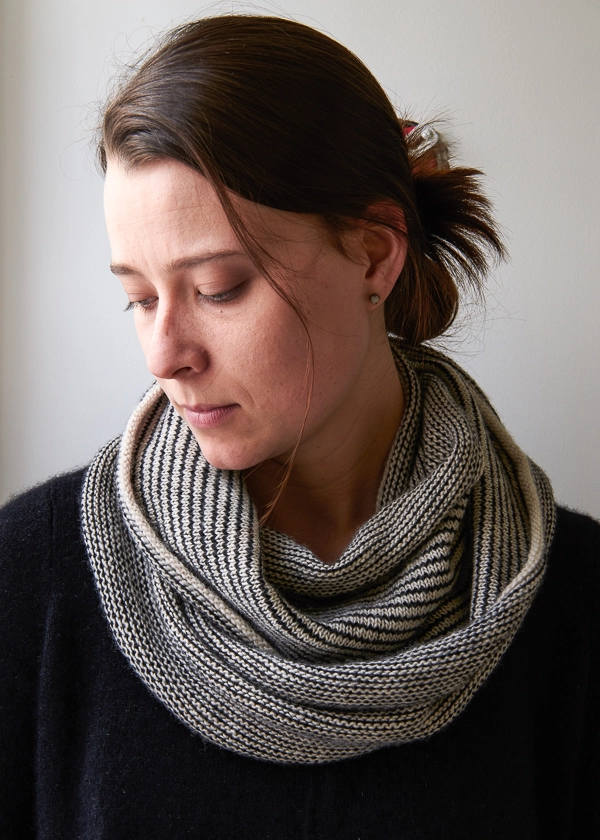
UPDATE: NOW IN LINE WEIGHT + QUARTZ
OCTOBER 2022
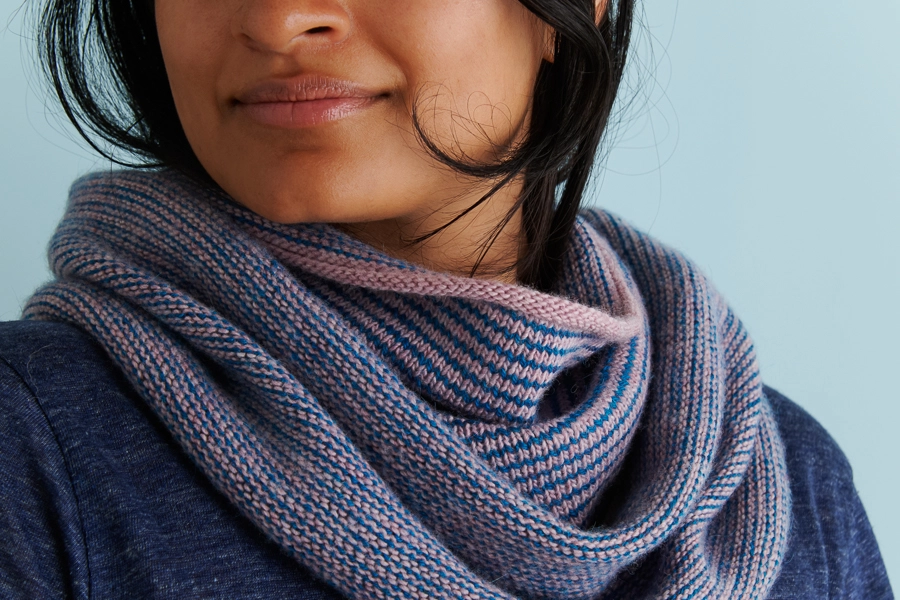
We updated our Newsprint Cowl, alternating between two of our favorite fingering weight yarns: Line Weight, a single-ply 100% merino as light as air and cloud-soft, and Quartz, a sumptuous mix of 65% merino wool and 35% suri alpaca, which adds a bit of texture and a lovely halo to the fabric. Choose the Newsprint Cowl Bundle that jumps off the page for you!
Designed for Purl Soho by Michele Wang.
Share your progress and connect with the community by tagging your pics with #PurlSoho, #PurlSohoBusyHands, #PurlSohoNewsprintCowl, and #PurlSohoLineWeight. We can’t wait to see what you make!
Materials
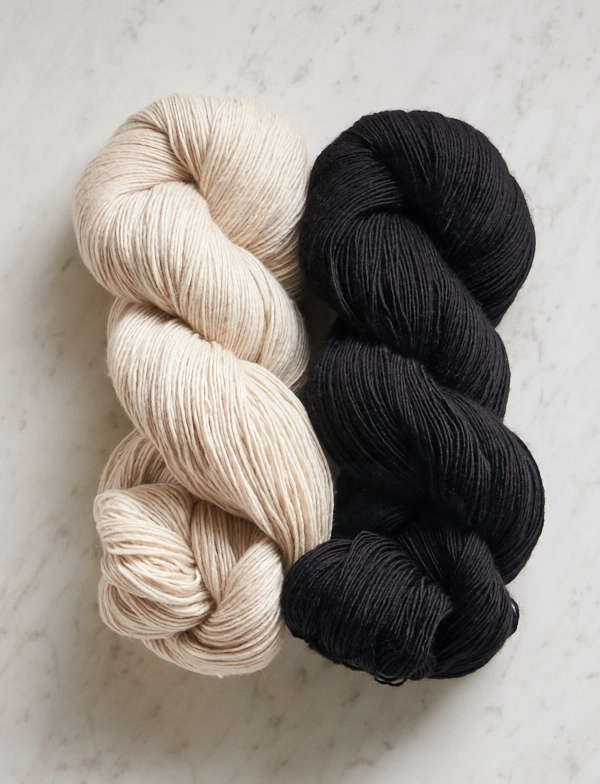
- Main Color (MC): 1 skein of Purl Soho’s Line Weight, 100% merino wool. Each skein is 494 yards/ 100 grams; approximately 494 yards required. We used Wheat Flour.
- Contrast Color (CC): 1 skein of Line Weight. Each skein is 494 yards/ 100 grams; approximately 240 yards required. We used Soft Black.
- US 4 (3.5 mm), 32-inch circular needles
We love Wheat Flour and Soft Black for their classic “newsprint” look, but here are some other equally pretty color ideas…
Main Color: Heirloom White (left) + Contrast Color: Kiln Red (right)
Main Color: Honey Pink (left) + Contrast Color: Super Pink (right)
Main Color: Dove Gray (left) + Contrast Color: Trout Brown (right)
Gauge
24 stitches and 35 rounds = 4 inches in stockinette stitch
Size
Finished dimensions: 12 inches high and 58 inches in circumference
Notes
The purl side of this Cowl is considered the right side, but you will make the Cowl with the wrong side facing you. This is so that most of your stitches will be easier knits rather than more difficult purls.
Because the wrong side is facing you, when you carry up the yarns for striping, be sure to twist them on the side facing you, aka the knit stitch side of the Main Body.
For more tips on carrying up yarn, please visit our Stripes in the Round Tutorial, but keep in mind that this tutorial carries the yarn up the backside of the work. The concept is the same, but again, here, you’ll carry the yarn up the front of the work!
Pattern
Begin + Work Trim
With Main Color (MC), use a Long Tail Cast On to cast on 348 stitches.
Place a marker and join for working in the round, being careful to not twist the stitches.
Rounds 1-4: With MC, purl to end of round.
Work Main Body
Round 1: With CC, knit to end of round.
Rounds 2 and 3: With MC, knit to end of round. (See Notes, above, for tips on where and how to carry up the yarn for striping.)
Repeat Rounds 1-3 until piece measures about 11 ½ inches from cast-on edge.
Cut CC yarn.
Next Round: With MC, knit to end of round.
Work Trim
Rounds 1-4: With MC, purl to end of round.
Bind off all stitches purlwise.
Weave in the ends and gently block your Newsprint Cowl!
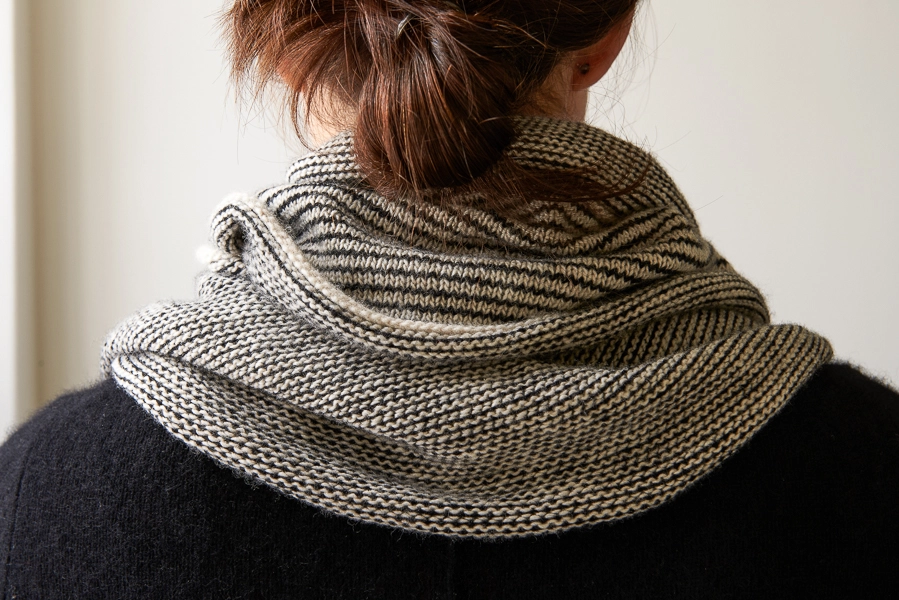

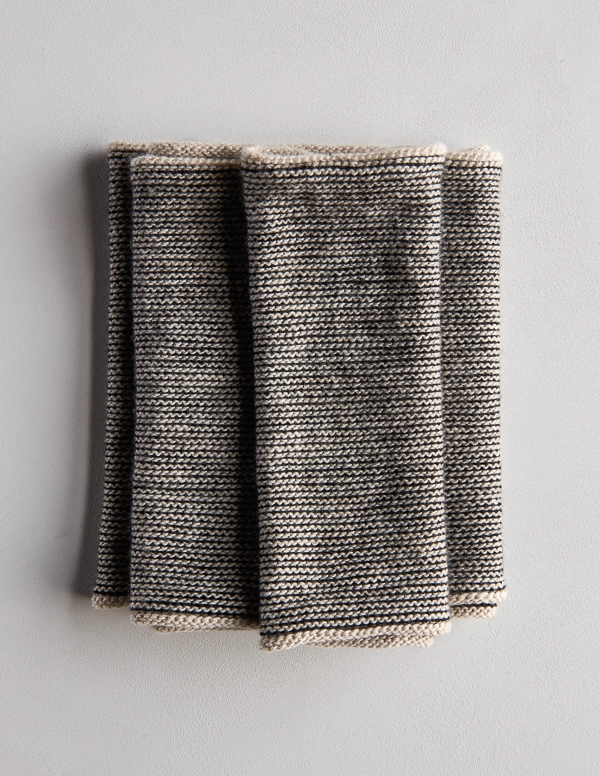
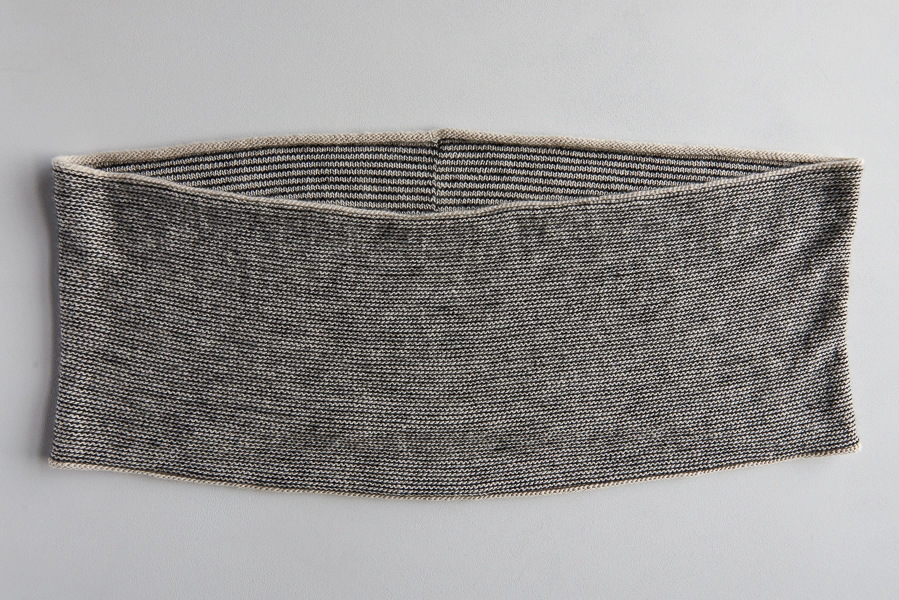
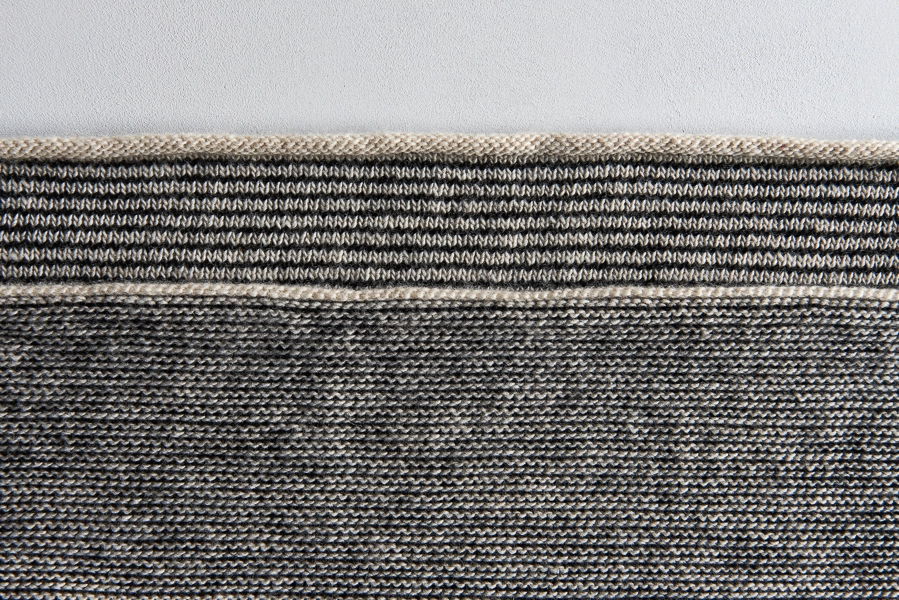
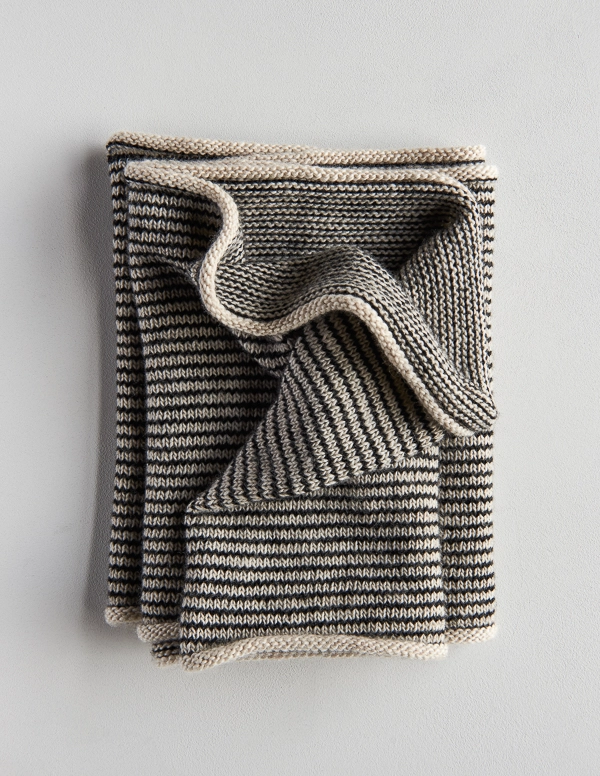
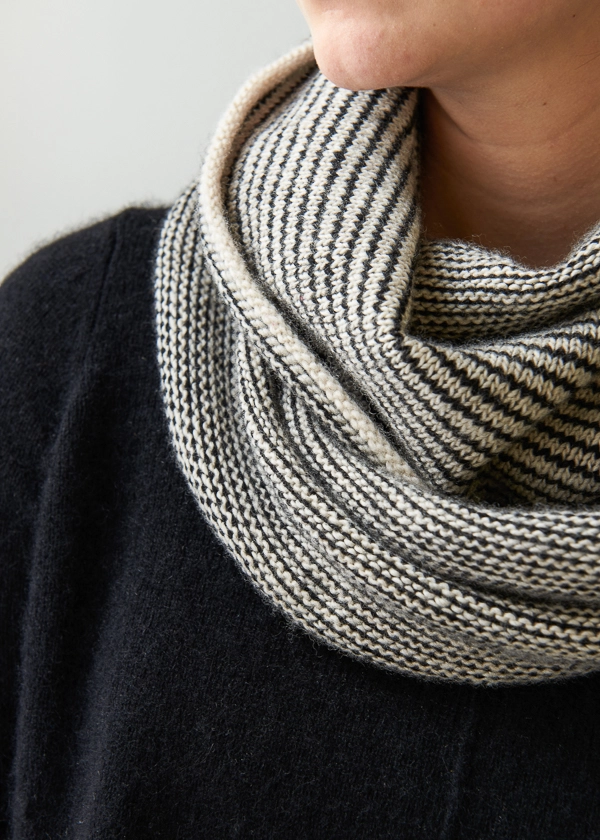
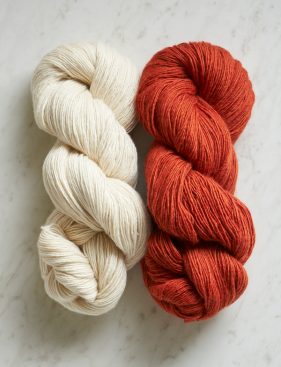
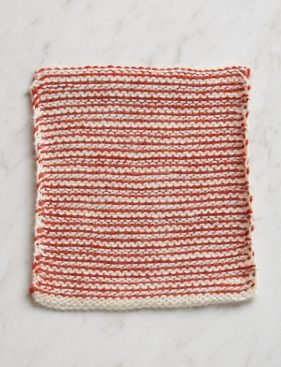
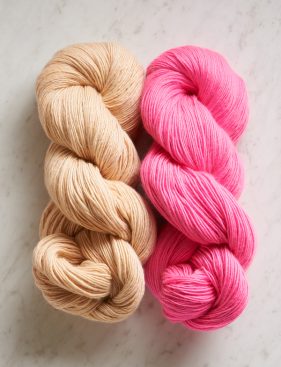
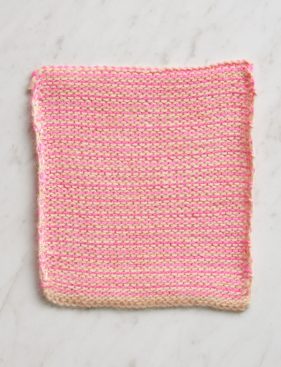
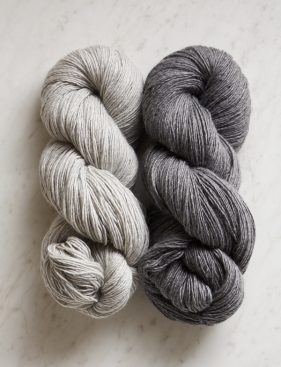
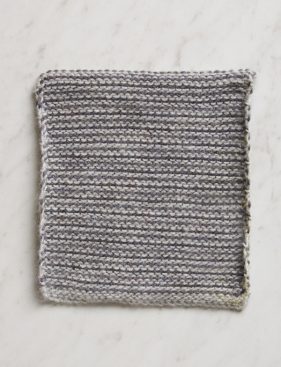


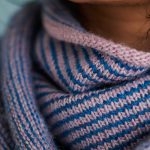
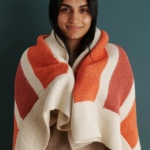
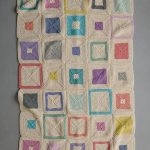

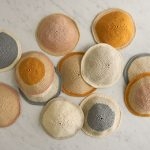

If I don’t join for the first 2 rounds to reduce risk of twisting, do I still purl both rounds?
Hi Maura,
Great question! For the edging to turn out in reverse stockinette, you will need to knit the first row, purl the second row, and then join in the round and continue purling for the next two rows.
Happy knitting!
Julianna
Hi, can you tell me why comments are no longer available following knitting patterns? They are very useful when there is a question on a specific part of a pattern. Thanks, vickie
Hi Vickie,
Thanks for bringing this to our attention! We recently did a massive upgrade on our website, and we are still working out some of the kinks. Missing comments on some of the posts is one of them! Don’t worry, we still have all the comments, and our tech team is working on getting them back on the website.
In the meantime, is there anything I can help you with?
Best,
Oscar
Thank you, thank you! So glad to see comments back. Whenever I contemplate a new pattern the comment section is my go to after reading the pattern. They are so helpful in understanding whatever issues your customers may have and your wonderful responses in clearing up any problem are so clearly written. Thanks for all the wonderful free patterns, advice and beautiful pictures. Your site is so inspiring! Safety to all, Vickie
I love this cowl and purchased enough to make two. I made the first one and it rolled up terribly even after blocking. Any ideas as to how to prevent this?
Hi Mary,
Thanks for reaching out! To help prevent rolling along the edges I would recommend working the first and last row of the pattern a k1, p1 stitch and then wet blocking the piece after!
I hope this helps, happy knitting!
Gianna
When you update the pattern, would you post the total amount of yarn needed to finish this scarf? I (very mistakenly) only bought one skein of each color from my local yarn store, not realizing it took over 500 yards! Perhaps a rookie mistake, but I only had the printed version with me when I was shopping! Thanks.
Hi Jennifer,
Thanks for reaching out and for the suggestion! With some of our older patterns we don’t have the resources to share the yardage required as we do for our newer patterns, but for this pattern luckily we know that we used approx: 450 yards of the Main Color and approx: 220 yards of the Contrasting Color for the sample! I will be sure to pass this along to the rest of the team to get the pattern adjusted!
Warmly,
Gianna
Can this Newsprint cowl be knitted on straight needles, not in the round? I’m not comfotrable knitting in the round.
Hi Mary Beth,
Thanks for reaching out! It is possible to make this cowl on straight needles but would need several changes, first, because the cowl is worked horizontally you cast on 348 stitches. If you work this flat it wouldn’t be possible to fit that many stitches onto straight needles so you would definitely need to use circular needles or change the pattern to to be worked vertically instead! But keep in mind working the cowl vertically instead of horizontally will completely change the look of the stripes! You would also need to keep in mind that the pattern is written for in the round so there are only instructions for working over the right side of the fabric and not the reverse, which working flat you would be working over both sides of the fabric.
I know that circular needles and working in the round can be very intimidating but it is actually very easy and some people find that it is more comfortable working with circular needles than straight needles!
I hope this helps, happy knitting!
Gianna
HI. I really love this fabric, but have no need for a cowl. Do you think I could knit this as a blanket using the “flip-slid” technique to carry the alternating yarn?
Hi Mary,
Thanks for reaching out! I think you could certainly apply this stitch pattern and flip and slide technique to a blanket carrying up the alternating yarn!
I hope this helps and please let us know how this turns out!
Warmly,
Gianna
I cannot wear wool as I am allergic to it. What yarn would you suggest I use in this pattern instead of the suggested yarn/
Hi Mary Kay,
Thanks for reaching out. We designed this pattern using fingering weight yarns, so most of our other fingering weight yarns would work great! If you’d like to use a plant-based fiber, then I’d recommend Santolina or Picnic Cotton.
I also wanted to recommend some of our merino wool yarns. Merino fibers are so fine that they bend to the touch, rather than sticking up and scratching. Most people who are sensitive to normal wool do not have the same reaction to merino wool! If you’re open to trying a merino yarn, then I’d recommend Line Weight or Posy.
I hope this helps!
All the best,
Lili
Hi there! I went to purchase Line Weight in Wheat Flour for this project and I’m not seeing it online; has that particular color been discontinued? How different is it from Heirloom White? Thanks!
Hi Kate,
Thanks so much for your question. I’m sad to share that we’ve discontinued Line Weight in Wheat Flour, so this color is no longer available. I’m so sorry about that! Heirloom White would definitely work for this pattern, too, and compared to Wheat Flour, Heirloom White is more of a light cream color rather than a warmer neutral shade.
If you’re interested, another one of our fingering weight yarns, Linen Quill (https://www.purlsoho.com/linen-quill.html), is available in Wheat Flour! You could definitely combine Line Weight with Linen Quill for this pattern as they’re both fingering weight to still get the original color palette featured in the pattern.
With any yarn substitutions, we also recommend doing a gauge swatch to make sure your gauge in the new yarn is consistent with the pattern. You might find that you need to adjust your needle size! Here’s our guide on swatching if you’d like more information (https://www.purlsoho.com/create/2020/08/20/all-about-gauge/)!
Hope this helps!
All the best,
Cat
I love the look of this. I’ve got leftover skeins of Line Weight in Dove Gray (two) and Fieldstone Gray (one). Will it look very different without the Quartz?
Hi Jane,
This cowl will work perfectly with two colors of Line Weight! It will have a slightly different texture without the Quartz, but it will still be lovely and soft.
All the best,
Lili
Love the modern simplicity of this pattern. How does the finished product result in 58 inch circumference on 32 inch needles? When I gauged my yarn I tried to cast on to achieve the circumference. I am overloading my needles. I’m a newb to these types of adjustments and would appreciate the advice.
Hi Tracy,
Hmmmmm, we found that all 348 of the cast-on stitches should fit on the circular needles, they’ll just be a bit squished together! Once you start knitting in the round, it should get easier to keep them on the needles though. But if you’re still having trouble, you could try 40- or 47-inch needles instead!
All the best,
Lili
Help! I have just finished knitting this wonderful cowl–however both the cast on row and the bind off row have caused the entire cowl to roll into itself. Will blocking help? Is there anything I can do to rectify this curl? Have any other people had this problem? I love the pattern and the wool I used. I just cannot get it flat!
Hi Donna,
Thank you for writing in! We are sorry to hear that this project is giving you trouble but we can confirm that blocking and pinning your project while drying will work wonders for curling. Please let us know if you have any other questions and we would be happy to take a deeper look!
Warmly,
Gavriella